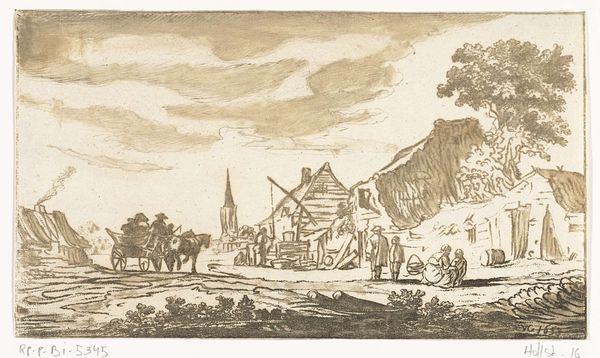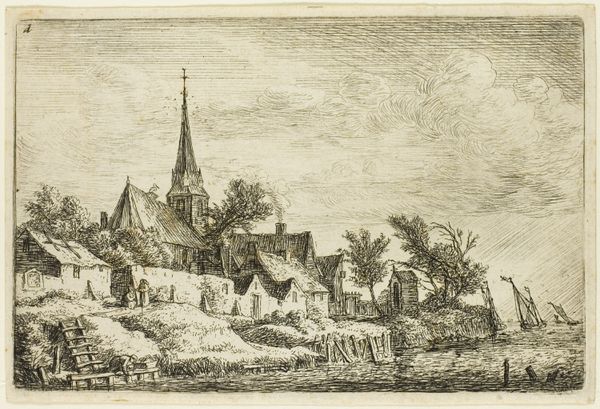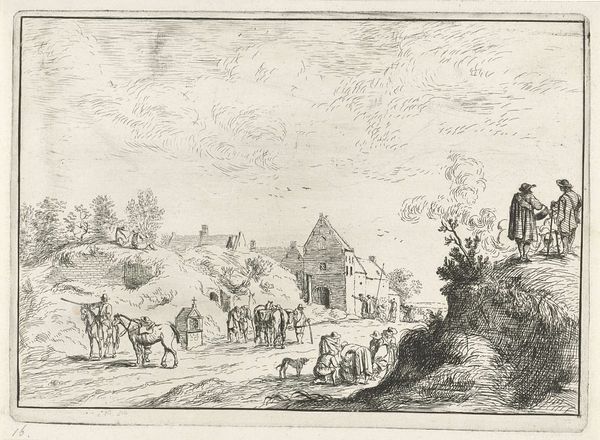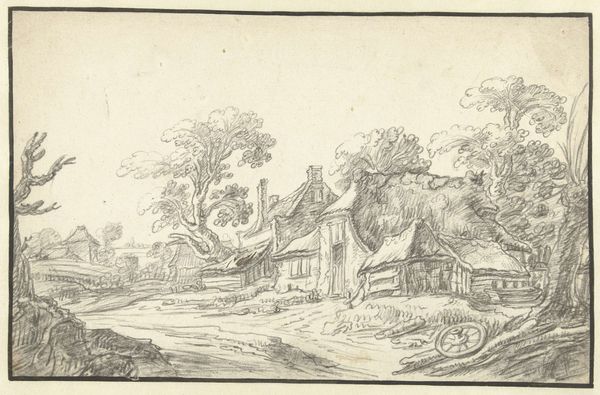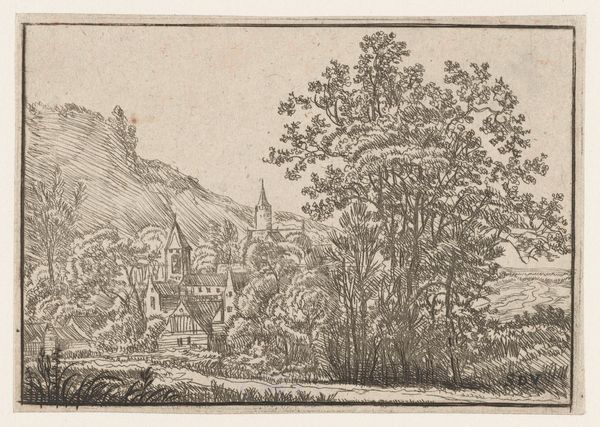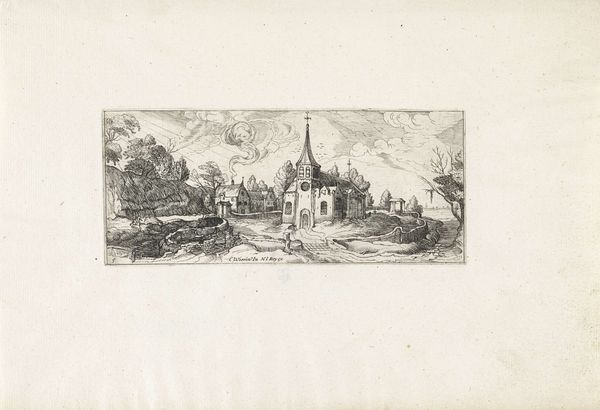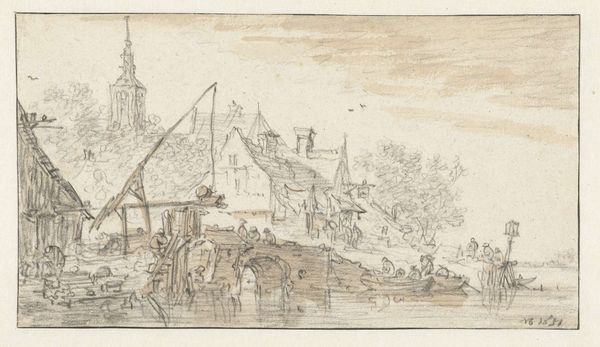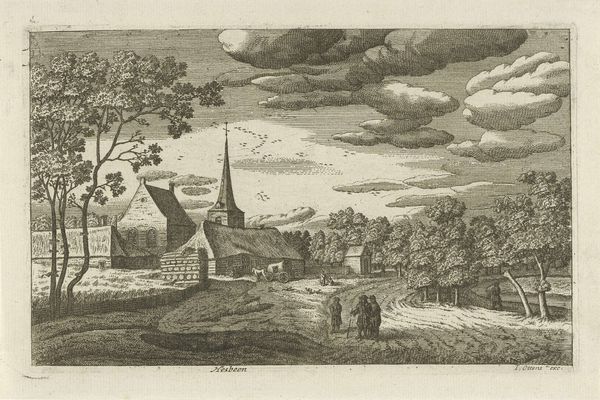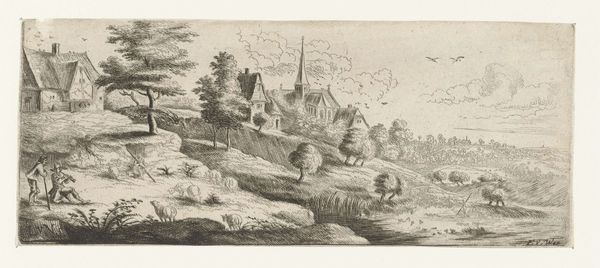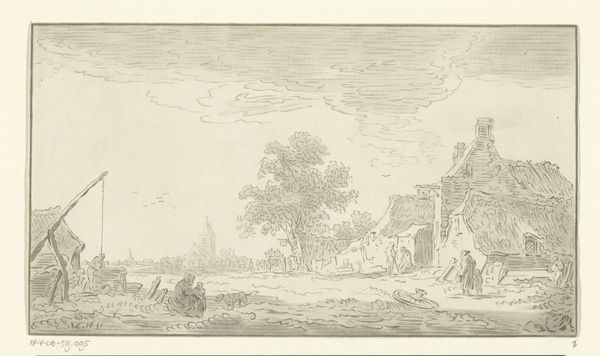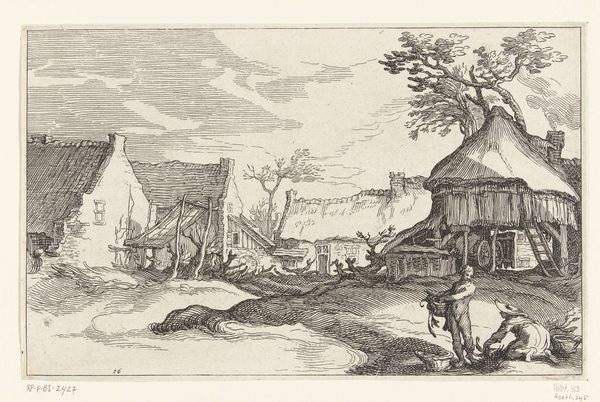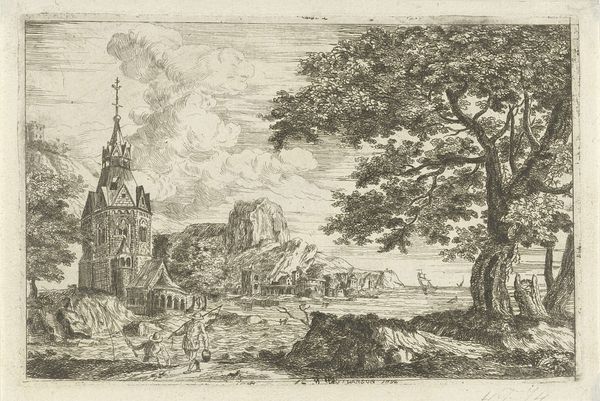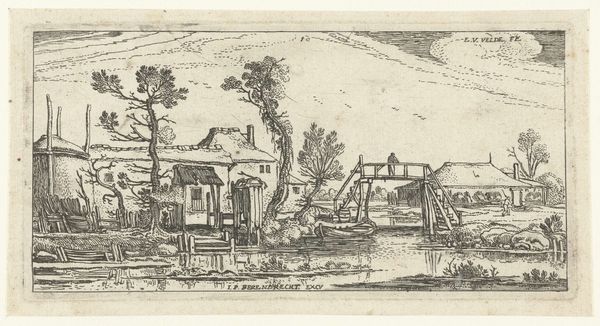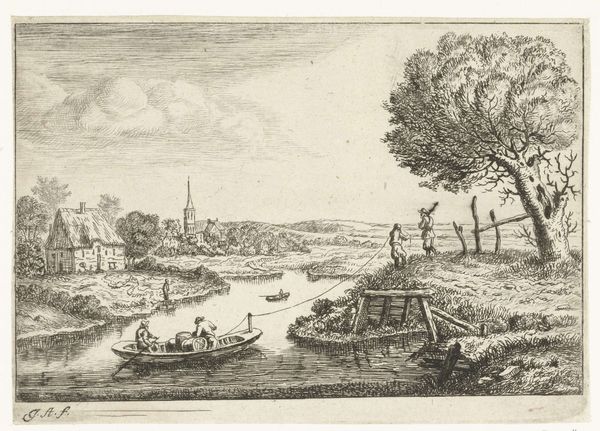
Dimensions: height 112 mm, width 191 mm
Copyright: Rijks Museum: Open Domain
Curator: Hendrik Busserus' etching, "Dorpsgezicht," from 1769, offers us a glimpse into Dutch village life during the late 18th century. It’s currently held at the Rijksmuseum. Editor: My immediate impression is that this image feels both detailed and sparse, a paradox created by the fine etching lines. There is so much carefully rendered detail, and yet it feels minimal and quite somber overall. Curator: The starkness might stem from the fact that Busserus aligns with “The Ancients”, and his adherence to a specific set of beliefs and traditions influences his depiction of this genre scene. We can infer from his symbols, particularly the horse-drawn cart juxtaposed against the grounded villagers, perhaps hinting at societal disparities. Editor: Observe how the compositional structure reinforces that tension. The horizon line divides the work almost in half, emphasizing the relationship between earth and sky, and the interplay of light and shadow, mostly created by hatching, draws our eye through the different vignettes contained within the composition. Curator: Yes, consider how the steeple in the distance symbolizes stability and faith, acting as an anchor amidst daily life. It would have represented something concrete for people. The act of drawing water from the well is more than a mundane activity. Water, a source of life, has symbolic depth for the community. Editor: Indeed. Speaking formally, the ink creates a sense of depth despite its monochrome character. The linear nature is pronounced. Did you notice how the trees and houses on the right lean right, while elements on the left go left? Curator: The leaning might even underscore the vulnerability of village life! Things don't seem entirely level or permanent in the way we like to believe, do they? But thanks to Busserus, his village scene resonates far beyond his time, reminding us of simpler routines. Editor: And simpler compositional methods perhaps. Focusing just on its basic lines and contrasting textures, we can truly grasp what Busserus valued aesthetically. It provides a visual skeleton that is interesting even if we never fully understand Dutch culture.
Comments
No comments
Be the first to comment and join the conversation on the ultimate creative platform.
